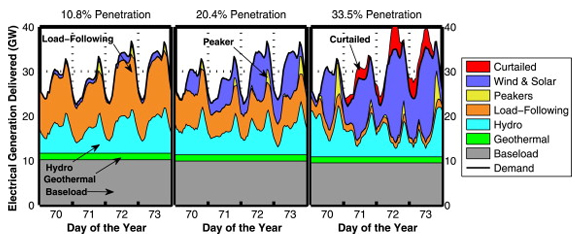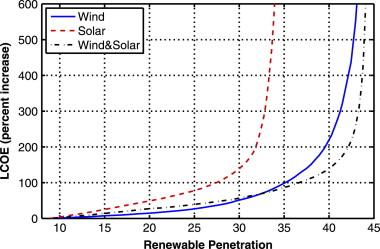APEP Publishes Study on a New Renewable Energy Model
March 5, 2013
HiGRID models the projected electricity production by resource type as wind and solar penetration increases.
HiGRID estimates the levelized cost of electricity as wind and solar penetration increases
J. Eichman, F. Mueller, B. Tarroja, L. Schell, and G.S. Samuelsen, "Exploration of the Integration of Renewable Resources Into
California's Electric System Using the Holistic Grid Resource Integration and Deployment (HiGRID) Tool," Energy, 2013.
The Advanced Power and Energy Program has developed a high-resolution computer model of the California electric grid that is capable of exploring the impacts of renewable generation, electric vehicles, demand response programs, large-scale energy storage, and other types of complementary technologies. A paper describing the model and applying it to scenarios for renewable energy deployment was released in January in the peer-reviewed scientific journal Energy (Eichman, et. al).
The model, referred to as the Holistic Grid Resource Integration and Deployment (HiGRID) tool, provides a critical capability at a time when California and a few other parts of the country are beginning to face challenges associated with an increasing penetration of intermittent renewables and plug-in vehicles on the electrical grid. It can resolve the hourly operating behavior for each type of power generating facility in California for broad, diverse deployments of new technologies. Understanding the detailed dispatch of generators is the key to accurately assessing greenhouse gas emissions, criteria pollutant emissions, fossil energy consumption, and ultimately future electricity cost. Initial model results show the importance of diversifying renewable power to include both solar and wind resources in order to reduce electric rates.

